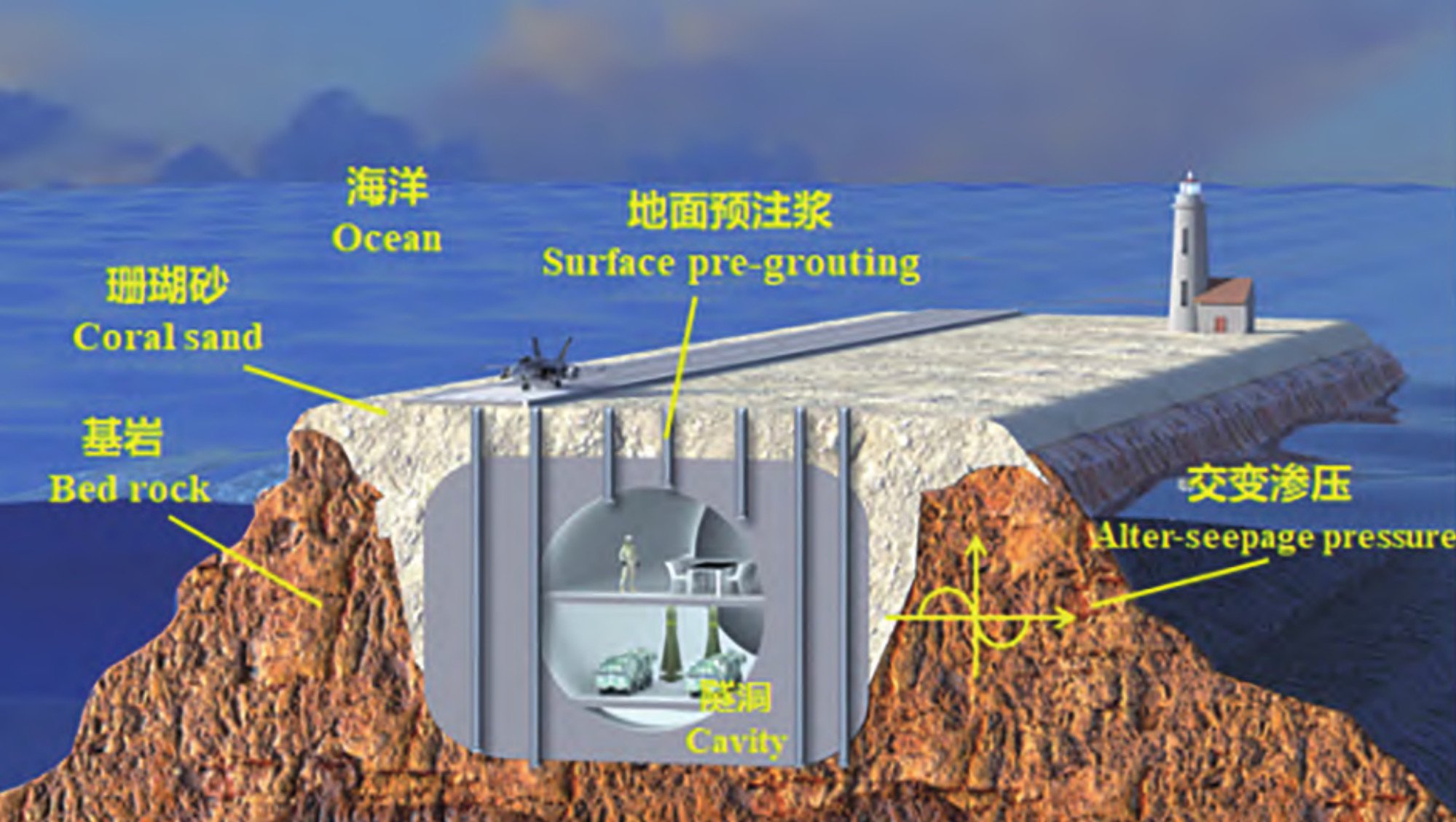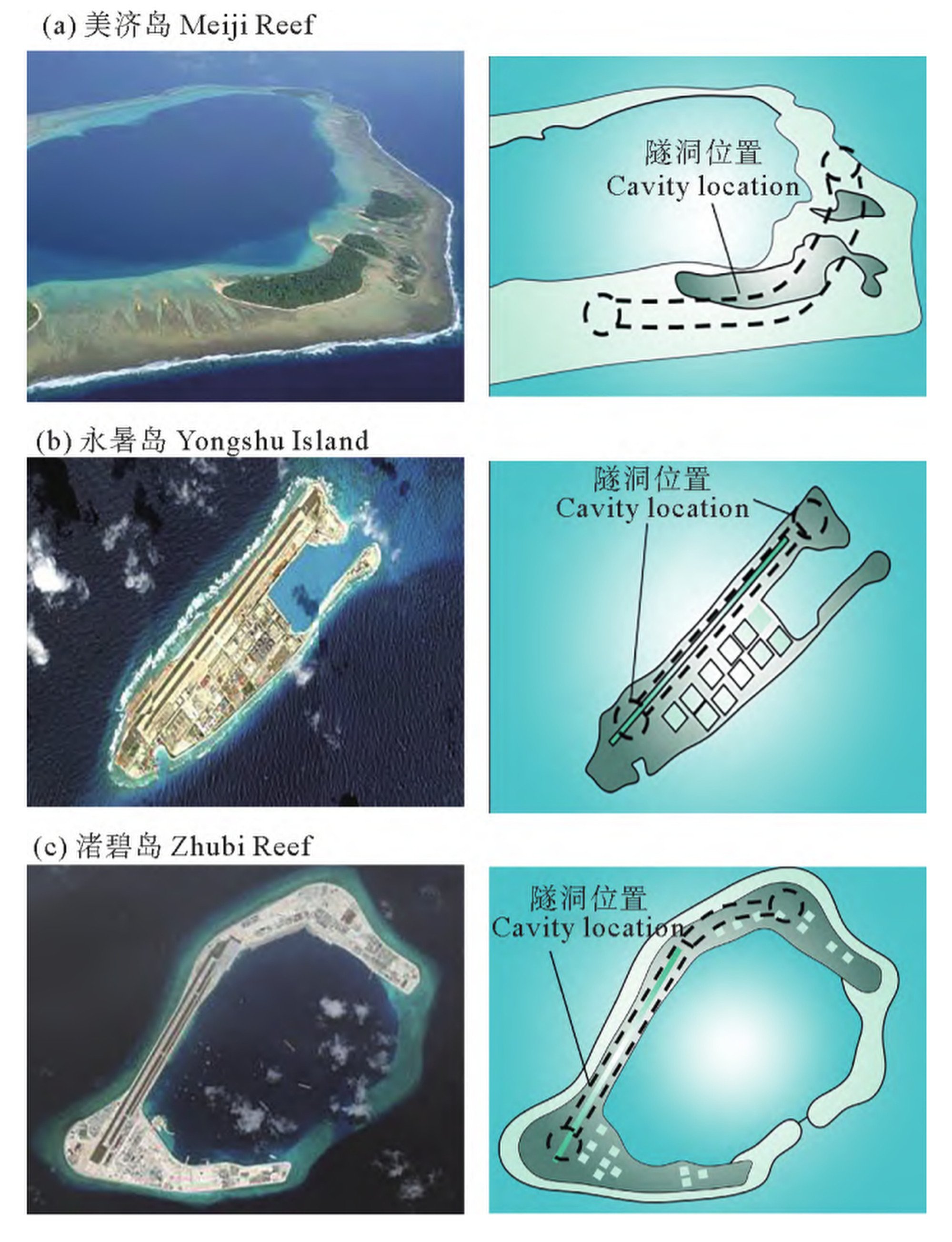But China’s growing economic and military strength is outpacing facilities on the islands, which are feeling the pinch of overcrowding, according to the Ocean University of China research team, led by Chen Xuguang.
“As the functions required of the islands or reefs increase, more personnel are stationed on them and the living facilities on the islands are facing shortages,” the researchers said in a peer-reviewed paper published in April by the university’s journal.
China has turned seven reefs in the Spratlys into artificial islands as part of its expansion strategy, using a unique process that extracts coral from the reef’s core which is then pulverised and piled up to create a ring of artificial land, metres above sea level.
The resulting land strips are crowded with airfields, settlements, missile launch pads and other infrastructure.
Chen’s team is proposing a solution previously thought impossible – the building of large tunnels beneath each island that would bolster China’s foothold in the region without provoking its neighbours.
The relative softness of the underlying layer of coral sand means that excavating tunnels could easily cause water seepage or collapse.
China’s military and government have also mandated that any expansion works must not disrupt daily operations or the long-term stability of the existing surface structures, according to the researchers.
Chen and his colleagues say they have developed an engineering technique to overcome these problems that has been tested and proven effective in rigorous laboratory experiments.

The method, which is backed by the National Natural Science Foundation of China, involves injecting a slurry mixed with fine cement particles into the ground through vertical pipes.
Under pressure, the mixture fills in the gaps between the coral sand grains, solidifying into a rock-hard underground mass once the cement sets.
Scaled-down laboratory tests confirmed that tunnels could be excavated in this artificial substrate without the intrusion of external seawater or secondary disasters such as ground subsidence, the researchers said.
According to the paper, the tunnels could be built in multiple layers – providing a usable area that potentially exceeds what is available above ground.
A conceptual diagram shows a double-layered structure with the upper level used as a living and working area, while the lower layer is used to store weapons such as large missiles and armoured vehicles.
But there would be more benefits from such an arrangement, apart from the extra space, with the tropical South China Sea often hit by typhoons and other extreme weather which cause significant stress to military personnel, the researchers said.
“The island reef tunnel has good thermal stability and can provide comfortable living conditions for personnel on the island, reducing the harm caused by severe weather,” Chen’s team wrote.

The researchers also noted that an underground environment, away from the harsh conditions on the surface, could extend the lifespan of facilities and equipment, as well as increasing their reliability.
“All kinds of equipment and facilities are faced with high temperatures, high humidity, high salt fog, and strong ultraviolet radiation. Corrosion problems are severe, and the logistics support capability is severely degraded,” they said.
“The electronic equipment failure rate of aircraft stationed in Hainan [the island province at China’s southern tip] is 1.9 times that of aircraft stationed in Shandong [province, in eastern China] and the lifetime of air conditioners in a tropical marine environment is only one-third of normal expectations.”
The paper includes preliminary construction plans for the three largest islands, with the approximate locations of the tunnels marked and suggestions for how they could be used.
The scientists said their proposals were merely guidance for government and military planners and should not be construed as blueprints for any actual construction projects.
According to the paper, tunnels on Meiji could be used to store important materials and provide shelter from extreme weather, while on Zhubi they could serve as living quarters as well as underground transport links.
“On Yongshu Island they should be built under the airport and can be used to store equipment and shelter from instantaneous impact loads,” the researchers wrote.

